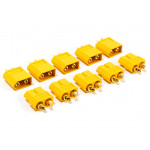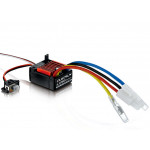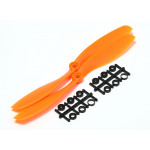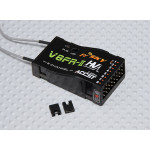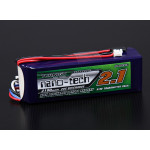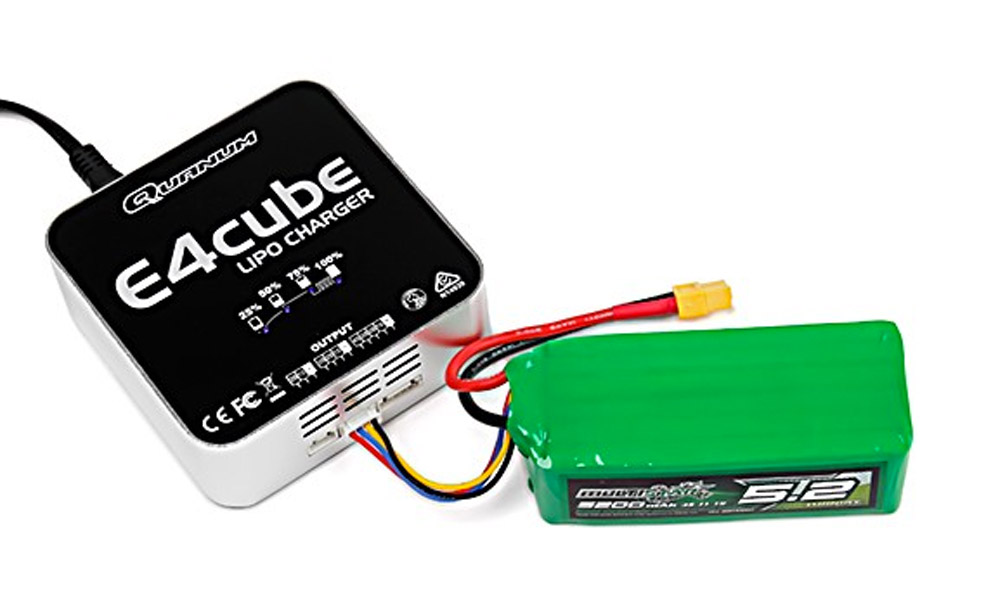
You’re not going to get very far in this hobby without a good LIPO charger but there are so many to choose from. So what do I need?
There are hundreds of chargers on the market but how do we sort the wheat from the chaff? Chargers are chargers are chargers right? Wrong. Anything could be further from the truth. A charger might well be one of the most important Hobby appliances you purchase. A poor quality charger is a risk to both persons and property. I’m all for saving a coin however a charger is no place to scrimp. Buy the best you can afford because even if you upgrade later and buy a higher capacity unit down the track you will still hang onto a lower capacity quality unit.
What to look for in a LIPO charger
When you first enter any hobby it can be daunting. The choices are endless with just as many opinions on offer. Every man and his dog are ready to offer you an expert opinion and usually, they are kind enough to offer you an affiliate link in which they are rewarded for getting you to purchase a product. Knowing what to buy and why is really important.
What Must a LIPO Battery Charger do?
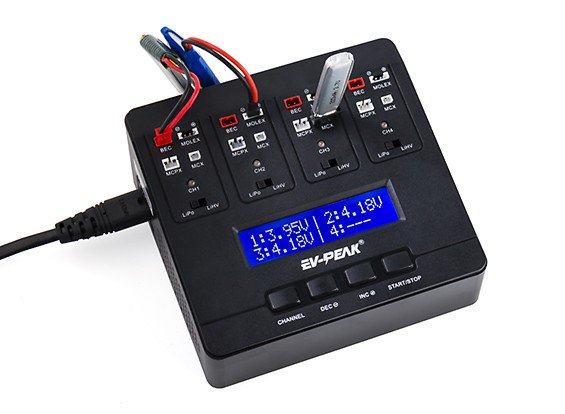 At the very least the appliance MUST Charge your LIPO batteries safely each and every time. It must be reliable and durable because it is unlikely to remain on your workbench. It will most likely be transported from your bench to the field and back again. It may be dropped, left in a hot car, left in the hot sun, sprinkled with rain and it must bounce back ready to take it again.
At the very least the appliance MUST Charge your LIPO batteries safely each and every time. It must be reliable and durable because it is unlikely to remain on your workbench. It will most likely be transported from your bench to the field and back again. It may be dropped, left in a hot car, left in the hot sun, sprinkled with rain and it must bounce back ready to take it again.
It must be able to measure the individual cells of the battery and ensure that each cell is balanced accurately. It should be able to accept a wide variety of input voltages. Whilst 12v input is ok the appliance will need a dedicated 12v power supply and its use will be limited. For example, if you intend to connect the charger to a car battery with the engine running the voltage may reach 14.8v.
Not only must you consider what you need for today but it may well be worth thinking ahead when you’re selecting a charger. Researching beforehand and knowing what you need and what options are available is going to save you money and frustration in the long run.
Choosing the best LIPO Charger
Let’s think about what you want to do and where you want to go to the hobby. If you have spent any length of time around a flying field you have no doubt see some models that really interest you and have you all fired up to become competent enough to fly or build that model. This is where it might be a good idea to find out what components are inside the model. As we progress in models the battery size tends to get larger in both cell count and capacity and in addition the way those batteries can be charged also changes.
For example, the charging requirements of a 2s 1000mah are going to be very different to a 6S 6000mah, and using a small charger to charge a 6S 6000mah is going to take a very long time indeed. Imagine you have several large 6S packs that you need to charge before heading to the field. It's going to take you hours and although possible it's highly It's just impractical because you’ll need to be close by during the charging cycle.
If you want to get into mini quads you’re probably looking at 1300mah 4s packs. No doubt you’ll want to fast charge those so you can spend as much time in the air as possible. Buying the right battery and the right charger will mean could charge a battery almost as quickly as you fly them. Imagine charging those packs at 13amps!
If you fly 90mm EDF jets you will likely use 5000mah 6s packs. No doubt you’ll want to fast charge those so you can spend as much time in the air as possible. Again, buying the right battery and the right charger will mean could charge a battery almost as quickly as you fly them. Imagine charging those packs at 50amps! I take a generator to the field and I’m able to fast charge a 6s 5000mah in under 8 minutes. Choosing the charger and the right battery might actually mean you spend less in the long run. I have fewer batteries in total preferring to fast charge the packs I do have. Not only am I thoroughly impressed with the performance of Turnigy Graphemes but also the fast charge capability.
In the early days of LIPO batteries, it was recommended that they charged at 1C. Those days are long gone and even the basic packs can handle 5C these days. Higher spec packs are advertised to be 15C fast charge capable, which can be charged at the same rate that a lower end pack can be discharged.
For those unfamiliar with the terminology:~ To charge at 1C means 1 x capacity. For example, if you have a 3S 2000mAh LiPo battery your charge current should be 1 x capacity or 2000mA = 2A; To charge at 2C, the charge current would be 2 x 2000mA = 4A. There are a lot more features packed into some of the best chargers these days and you might say well I don’t need all of these. True. You might not need all of those features now but I bet if you knew what those features did were you might rethink your position.
Understanding Features
- LCD display - Microprocessor controlled
A visual display is an essential requirement for a LIPO battery charger. You will absolutely need a visual reference in order to determine battery health. Although there are chargers on the market that do not have an LCD screen you should completely avoid those. - Battery Detecting Chargers
Some chargers need to be told what battery you have connected each and every time you use the charger. This means that it's possible you can make a mistake and overcharge the battery. My preference is for a smart charger that is able to determine what type of battery is connected. It would be the closest to plug and play charging at this time. The charger reads the balance port to determine the cell count. Although not essential I high recommend this function. - Individual LIPO cell monitoring - balancing
The charger must be capable of cell monitoring and balancing. LIPO battery cell voltages must remain synchronized with all other cells in the LIPO battery. If some cells manage to fall out of synchronization the battery may become unstable. Each cell must only be charged to a maximum of 4.20v per cell and this is the most important feature of our modern chargers. This is why it is critically important to always connect the balance lead to your charger every time because the charger will stop charging in the event that a cell goes overvoltage for any reason. - LIPO Chemistry - LiHV, Li-ion, LiPoly, and LiFe capable
LIPO chemistry is always advancing with better technologies reaching the market faster than ever before. Most, if not all good chargers have the capability for the 4 latest LIPO chemistries. LIHV has the best power to weight ratios and is gaining ground as the technology is accepted up by hobbyists. - Ni-Cd and NiMH capable
NiCd batteries have not been sold around for almost 20 years, however, most would be familiar with the far superior NiMh batteries that replaced them. Although a nice to have feature it is highly recommended. Many people have NiMh battery packs for their transmitters and receiver packs in RC aircraft and vehicles. - Lead Acid capable
Lead Acid batteries are very common and have endless industrial applications. You'll most likely use one daily in your motor vehicle for example. Having a charger capable of topping off a lead-acid is very handy. Although a nice to have feature it is highly recommended. You never know when you’ll leave the lights on in your car and need to charge it again. - Large range of charge currents
Chargers capable of larger currents are fantastic however lower currents are just as important. For example, you may need to charge a 1s 100mah pack. You cannot charge this battery at 50amps as it would be immediately damaged. All modern chargers are capable of changing the change rate. - Lipo Battery Monitor
Some chargers have the capability to monitor the entire charge and log this data to your hard drive for later review. I personally have never used this feature and so suggest that this feature is nice to have but not essential. - Battery Internal Resistance Measurement
Internal resistance is the best measurement of battery health and performance. The lower the IR the better the battery performance will be. C-rating cannot be relied upon as manufacturers are known to overinflate their claims and have since rendered the rating meaningless. Measuring IR is fairly easy to do with the right equipment and o date has shown it is a good guide to real performance. - Resistive Discharge
This type of discharge can take several hours to complete and I personally have not used this method. If I need to drain the current from a battery I simply run the battery down by placing it back into the model. Resistive discharge simply dumps current into a resister resulting in heat. Most chargers, even the top-end ones can only discharge at around 50 watts using this method. - Regenerative Discharge
This is one of the most useful features of chargers today. I myself have used this many times to recharge car batteries that have been drained a little too far by members of my model club. I’ve also stopped to help other motorists and managed to get them on the road in less than 5 minutes and of course on my own car battery when I’ve drained it a little too far. You can of course use it to discharge your packs back into a lead-acid storage battery. This is indeed a nice to have feature but not essential. - Firmware updates
Many companies offer firmware updates for their chargers and this comes in handy should a new chemistry popup on the market. This allows you to somewhat future proof your charger and it also allows you to update the charger in the event there is a bug found later down the track. - Storage voltage function allows safe storage current
The charger will only bring the battery up to the specified resting voltage. It is widely accepted that LIPO batteries be kept in a cool place and be kept at 3.7~3.8 when not in use. Leaving a LIPO fully charged can shorten the lifespan of the battery and lead to the battery puffing or gassing. This is nice to have a function. - Time limit function 1~720 minutes
If you leave your charger operating and forget about this function is meant to trigger at the time specified. It will halt the charging process in the hope that the battery is not overcharged or damaged. - Temperature Cut-off (20-80 degree Celsius/68-176 Fahrenheit)
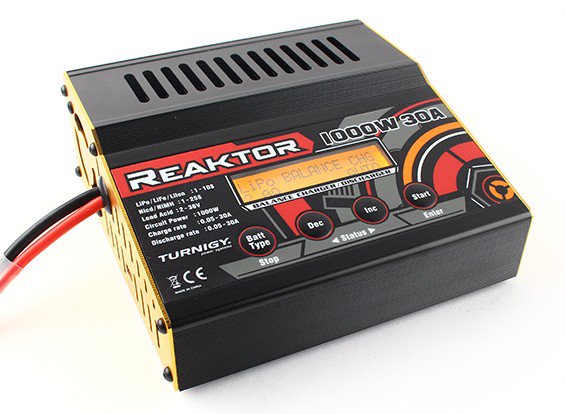 Using a temperature probe it is possible to set the charger to stop the probe reaches a set temperate threshold. The idea behind this is very simple. If a battery that is becoming hot there is something wrong therefore shut down charging. This is nice to have the function but not essential.
Using a temperature probe it is possible to set the charger to stop the probe reaches a set temperate threshold. The idea behind this is very simple. If a battery that is becoming hot there is something wrong therefore shut down charging. This is nice to have the function but not essential. - Input voltage monitoring
This is function will prohibit the charger from drawing any more current once the input voltage drops to a defined voltage the charger will stop. This protects your car battery from being drained in the field. It also allows you to monitor the current being drawn. For example, if you are charging a 6S battery at 30 amps you may be surprised that you are drawing 70amps at 12v and this is not good on a car battery for example. I use 2 HP server power supplies wires in series to give me 100amps at 25v. - Input Voltage Range
Input voltages range from 12~32v and my advice is to obtain the charger with the highest input voltage. Inverting voltages will cause a lot of heat to be generated both to the input wires and the charger. For example, inverting from 12v to 25v so that you can charge your 6S battery consumes a lot of additional energy. The higher the input voltage the better it is on the charger and the power supply. - Multiple Channel Chargers
Multiple channel charger is effectively multiple chargers in one. Each charger is called a channel that can be used to charge many batteries at the same time. For example;~ A 4-channel charger is capable of charging up to 4 completely different batteries at the same time, regardless of capacity or cell count. There is no special advantage however everything is neat and tidy. - Battery break in and cycling(1-5 cycles)
Many believe that LIPO batteries benefit from cycling and I’ve seen enough evidence to support this theory. There is nothing special about the process other than gently allowing the battery to charge and discharge several times. Tests have been carried out where it can be demonstrated that pack capacity is 5% higher on packs that were cycled when compared to batteries that were not cycled. Many now swear by this and I’m sure this will become normal practice over the next year. A nice to have feature but remember that it may be quicker to discharge the battery regeneratively or by placing the battery in the aircraft or vehicle and running at ¼ throttle until at 80% of capacity. - Cooling fan
This will start/stop automatically according to the internal temperature and charge/discharge power, and protect the charger from overheating. This is a must-have. - Foam Cutting Driver
This feature turns the charger into a powerful wire cutter. You can get very precise heating settings allowing you to control how the foam cutter operates. This essentially acts as a convenient power supply for a hot wire foam cutter. This is nice to have a function. - Reverse Polarity Protection
Most chargers have protection for reversed polarity on both the input and output of the unit. This is a must-have feature as you will absolutely reverse the polarity. - Accuracy
Above all the charger must be accurate. A wildly inaccurate charger is a danger to person and property and they should be avoided like the plague. If they are not damaging your property they’re damaging the battery. If you have a charger that is inaccurate you need to either calibrate the charger or stop using it for LIPO batteries. - Parallel Charging
Whilst most chargers don’t come with a parallel charging board it's worth talking about if you’re considering a new charger. Imagine being able to put all of your 3s batteries on charge at the same time. The capacity is irrelevant in parallel charging as it’s the voltage that is important. For example, we could charge 5000mah and 2200mah 3s packs at the same time. The only caveat is the batteries must be all at roughly the same voltage. In other words, you must not connect fully charged and discharged packs in together because current will rush from one battery to the other and you may damage the packs or the board.
If this sounds like something that is of interest then a high current charger such as the Turnigy Reaktor 30A 1000w unit is well worth looking at. You could plug 6 2200 packs at charge at 30amps allowing you to charge all 6 batteries in 30mins. You could save a lot of time by choosing this method of charging.
Choosing Charger Power Output
LiPo Chargers are often displayed in Watts or amps. This is simply calculated by multiplying voltage and current. To work out your power needs you can simply multiply the charging voltage and current. For example, to charge a 3S 2200mAh LiPo at 12.6V at 1C (2.2A), you will need a charger that is rated for at least 27.72 watts (= 12.6V x 2.2A) or higher. The max charge current is governed by the maximum watts of the charger. This is most apparent when dealing with higher cell count LiPo. For example for a 50W charger will have a maximum rating of 5A, however, you will find the actual maximum charge current for 3S battery to be only around 3.96A (= 50W / 12.6V). This only an estimation but as you can see a 5amp charger might not actually charge at 5amp.
What Power Supply Do I Need for a LiPo Battery Charger?
We have talked about what options are available and what makes a good charger. We have covered what options are available in today's best chargers but rarely do we talk about the power supplies required. These are important considerations when choosing the best LiPo charger.
Choosing Power Supply for LiPo battery charger
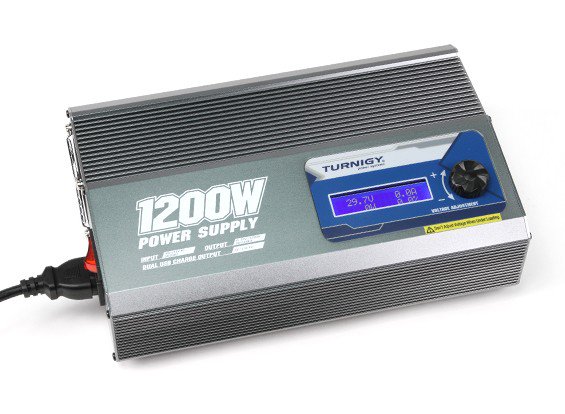 There is no doubt that chargers without a built-in power supply are a lot more common than an all in one unit. There are just as many power supply units (PSU) as there are chargers but this is one area where you need to buy from a reputable source. You’re dealing with high voltage items so the risks are high. You might be thinking... What could possibly go wrong?
There is no doubt that chargers without a built-in power supply are a lot more common than an all in one unit. There are just as many power supply units (PSU) as there are chargers but this is one area where you need to buy from a reputable source. You’re dealing with high voltage items so the risks are high. You might be thinking... What could possibly go wrong?
Power supplies are expensive and will likely cost you more than the charger itself and whilst there are other cheaper alternatives they have drawbacks. For example, a computer power supply will generally do 12v @ 15 amps, however, many may feel that is not enough. I know that would not be enough for me.
The Turnigy 1200W 30v power supply is for serious hobbyists. This unit will see you in your retirement. The 500W 18v Power supply is also a good option for most hobbyists.
Be careful that the output voltage of your power supply does not exceed the maximum input of your charger. Remember that there is always loss and inefficiencies with chargers so if you have a 100W charger I suggest a power supply rated at least 120W. If you buy a larger power supply there is no downside except for future-proofing.
In summary
A LiPo charger and power supply are long-term investments. They are going to give you decades of reliable service if you start out properly. The most expensive charger is not necessarily the best. Some big names brands are ridiculously expensive and not deservedly. Parallels can be drawn with some radio equipment like Spektrum and Futaba. Yes, they are good quality but not worth the asking price and they lack features that are included with today’s entry-level radios.
Happy flying and charging!
Written by Gozarian
Hear it First: Join our Mailing List
Sign up to receive new product updates, exclusive discounts, news, and more!

